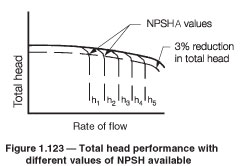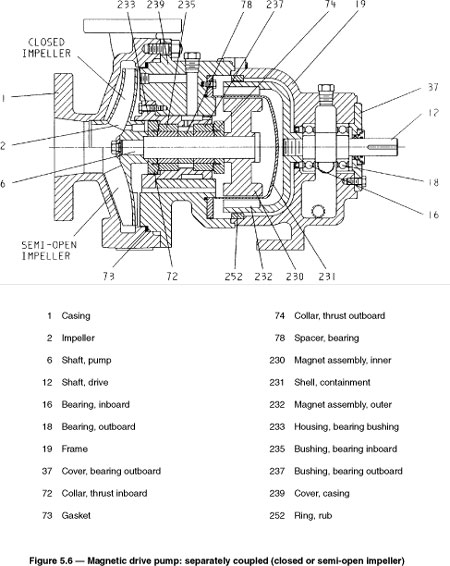Q. I have heard that the rate of flow through centrifugal pumps can be regulated by submergence control instead of by throttling the pump discharge. How does this work, and does it damage the pump?A. Submergence control is sometimes used in applications where NPSH available to the pump is limited, and the pump would naturally be operating with marginal NPSH. A good example is condensate pumps in steam power systems.
Condensate pumps take condensed steam out of the bottom of the steam condenser. Ideally, when operating at the design conditions, the liquid level in the condenser hotwell provides sufficient NPSH to the pump so that it operates on the head curve, producing the design rate of flow. When the load on the electric generator is reduced, the steam requirements are reduced and the amount of condensed steam entering the condenser hotwell is reduced.
This reduction in condensate causes the pump to draw down the level of liquid in the condenser, thereby reducing the NPSH available to the pump. The reduction of NPSH available to the pump increases cavitation, resulting in a reduction in the rate of flow. If the load on the generator does not change, the pump will operate in this mode until the load is increased back to normal.
The figure below shows the changes in the total head curve with different values of NPSH available and how the rate of flow changes.
 The continuous cavitation in the impeller can be damaging to the pump, but more cavitation resistant impeller material and more rugged design of the pump shaft and bearings can compensate for this.
The continuous cavitation in the impeller can be damaging to the pump, but more cavitation resistant impeller material and more rugged design of the pump shaft and bearings can compensate for this.
Q. I have an older pump with a pump model but an obsolete address on the nameplate. How can I locate the supplier in order to get information about the pump and purchase replacement parts?
A. The Hydraulic Institute has a "Supplier Finder" on its website which includes hundreds of trade names and company names associated with them. Go to www.pumps.org and open the "Find a Supplier" section. Click on the "Trade Name" scroll bar and scroll down to the trade name you are looking for. Click on "Begin Search" and the information you need should be there.
The "Supplier Finder" also includes the following scroll bars: Product Description, Product Category, Markets Served, Company Name and Location. These might also help you find the right information.
Editor's Note: Pump-zone.com also has a Manufacturer's Directory to help readers find supplier information.
Q. We are considering using a magnetic drive pump for handling toxic liquids. The containment shell between the inner and outer magnet assemblies is very thin. We have concerns about wear in the shell and leakage of the liquid. Is our concern valid, and what can be done to protect against leakage?
A. Leakage of toxic liquid from any type of pump is a valid concern. You can take the following precautions regarding magnetic drive pumps:
The containment shell material must be selected to resist corrosion and erosion from the liquid being pumped. Metallic containment shells must be designed for the maximum allowable working pressure within the stress values for the materials in "Section VIII of the ASME Boiler and Vessel Code." There shall be a minimum ratio between bursting pressure and design pressure of 2 to 1 for the pressure/temperature range in the pump.
The gasket between the containment shell and the pump cover casing must be confined on the atmospheric side to prevent blowout. The design shall consider thermal cycling, which may occur as a condition of service.
Sensors should be provided to measure and monitor the position of the inner and outer magnet assemblies to prevent them from rubbing on the containment shell.
A secondary containment shell shall also be provided. This is usually done by the outer housing, which surrounds the outer magnet assembly, and a suitable sealing device around the input shaft on the pump side of the inboard bearing (Ref 16). See the figure below.

Provide a leak detector or pressure sensor at an appropriate location in the outer containment shell (frame- part 19-or cover, casing-part 239) to detect loss of primary containment.
For further information see ANSI/HI 5.1-5.6-2000 Sealless Centrifugal Pump.
Pumps & Systems, May 2008

